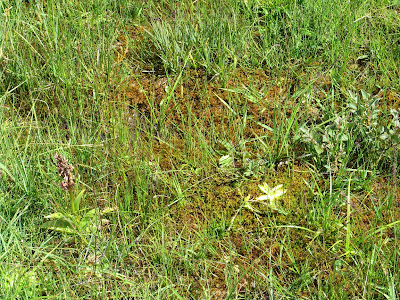I'm here in Austria and I found a lot of natural wetlands at 1900, 2300, and more meters above sea level .... sometime I forget that everything start from these! As stated by the RAMSAR CONVENTION (www.ramsar.org) wetlands are areas of marsh, fen, peatland or water, whether natural or artificial, permanent or temporary, with water that is static or flowing, fresh, brackish or salt, including areas of marine water the depth of which at low tide does not exceed six metres ... in particular are also a natural humid environment where water, plants and soil stay together, live together, change and evolve depending on climate, hydology, human impact (see my mountain bike's rear wheel) etc... enjoy the images below with juncus (the green), eryophorum (the white plume), orchys (the violet), and the carnivorous pinguicola (the pale green) found here in Austria in the area of Fiss:














